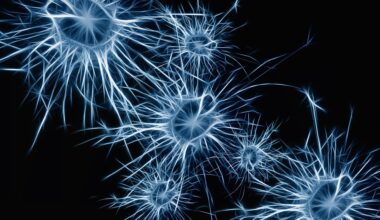Pictured: Dr. Terrance Snutch (left) and Dr. Brian MacVicar (right)
A team of researchers has made a significant discovery in the mechanism of brain swelling, paving the way to preventative treatment for severe to fatal brain damage following stroke, head injury or cardiac arrest. Their research, published today in Cell, paves the way for a preventative drug treatment for severe brain damage following stroke, infection, head injury or cardiac arrest.
By turning off a single gene, scientists from the Djavad Mowafaghian Centre for Brain Health (DMCBH) were able to stop fluid from accumulating in rodent brain cells.
Caused by an infusion of water and sodium chloride into the brain’s nerve cells, brain swelling is a gradual process that becomes life-threatening days after the injury. By identifying the mechanism behind the swelling, emergency physicians may in the future be better able to provide preemptive treatment, protecting the brain in the days that follow the initial trauma.
The brain swells as the sodium chloride draws fluid into the nerve cells by osmosis. This swelling—known as cytotoxic edema—eventually kills brain cells.
Using a special microscope, scientists were able to watch the cascade of events that took place within individual brain cells as they swelled. They then switched off the expression of different genes and were able to pinpoint a single protein—SLC26A11—that acts as a channel for chloride to enter nerve cells. Turn off the chloride channel, and you stop the accumulation of fluid.
“It was quite a surprising result, because we had few indications as to what this protein did in the brain,” says Dr. Ravi Rungta, then a graduate student in the MacVicar lab and the paper’s first author.
The team, including Dr. Terrance Snutch, director of translational neuroscience at DMCBH, developed several novel technological approaches to identify the cascade of events that took place within individual brain cells as they swelled.
“We’ve known for years that sodium chloride accumulation in neurons is responsible for brain swelling, but now we know how it’s getting into nerve cells, and we have a target to stop it from happening,” explains Dr. Brian MacVicar, the study’s principal investigator and Co-Director of DMCBH. “This is the first time we’ve been able to block its entry into the nerve cells.”
Severe brain swelling is life threatening because the skull, which normally protects the brain, also limits its ability to expand. With increased pressure and nowhere to go, if the brain swells down towards the brain stem the centers that control breathing can be crushed.
In cases where other treatment options fail, an operation called a decompressive craniectomy is sometimes performed where a portion of the skull is removed and the brain is allowed to swell out of the skull. Although extreme, it can save the patient’s life, but the procedure is not always effective, nor without complications. There’s an urgent need for new treatments.
Though the technique used by the researchers in the study does not work quickly enough to mitigate swelling in the case of real head trauma, the discovery has provided a target for drug development.
“This discovery is significant, because it gives us a target – now we know what we’re shooting at, we just need the ammunition,” says MacVicar. “That’s what we’re doing now: looking for a drug to inhibit the chloride channel.”
Read more: UBC Media Release, April 23, 2015
Citation
Ravi L. Rungta, Hyun B. Choi, John R. Tyson, Aqsa Malik, Lasse Dissing-Olesen, Paulo J.C. Lin, Stuart M. Cain, Pieter R. Cullis, Terrance P. Snutch, Brian A. MacVicar. The Cellular Mechanisms of Neuronal Swelling Underlying Cytotoxic Edema. Cell , Volume 161, Issue 3, 610–621. DOI: http://dx.doi.org/10.1016/j.cell.2015.03.029


